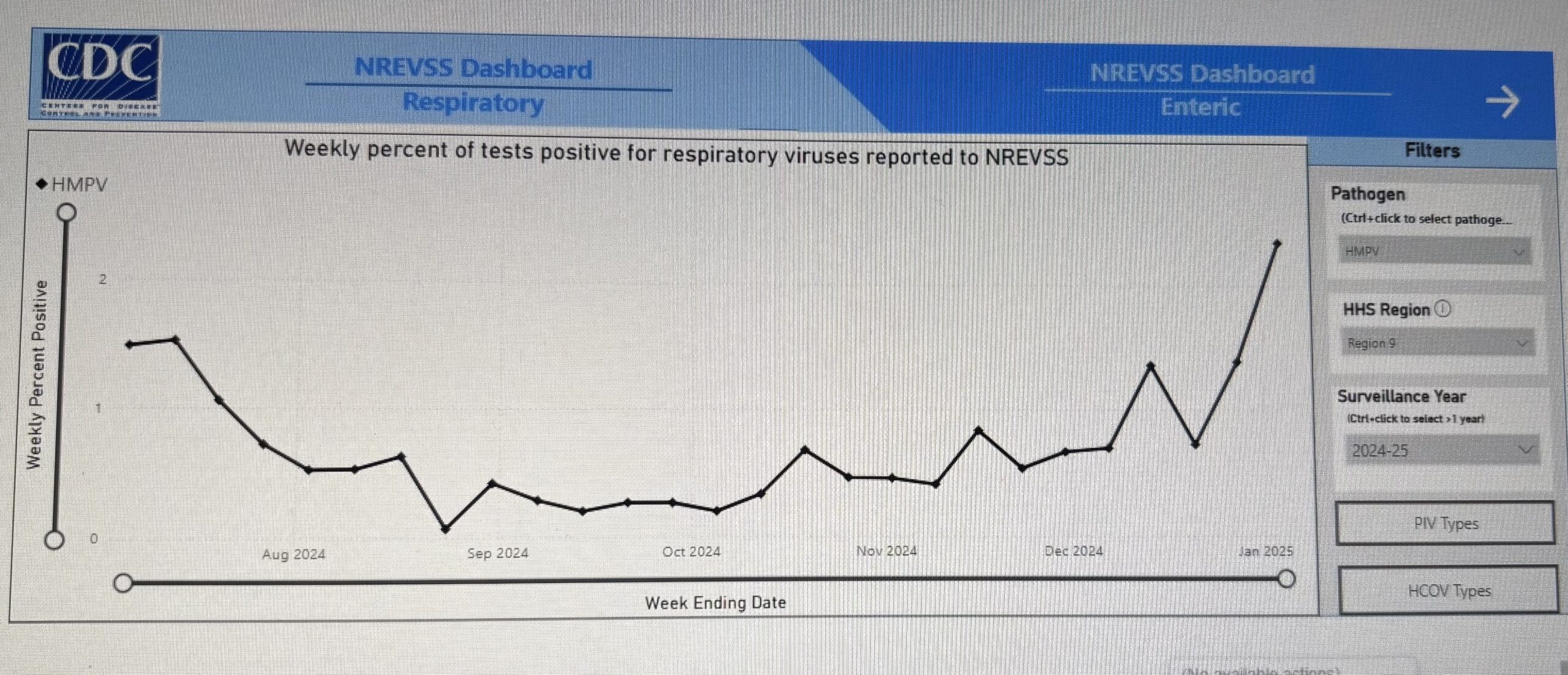When it comes to respiratory viruses, names like RSV, flu, and COVID-19 often dominate the headlines and conversations among public health folks. But there’s seasonal respiratory virus that deserves attention: Human Metapneumovirus (HMPV).
About Human Metapneumovirus | CDC
While it’s been circulating in the U.S. for decades, it hasn’t received the same spotlight as its viral cousins. Let’s break down what HMPV is, who’s most at risk, and how you can protect yourself and your loved ones.
What Is HMPV?
HMPV is a respiratory virus that’s part of the same family as RSV. It spreads through respiratory droplets, close contact, and touching contaminated surfaces.
Most people recover without issue, but for some, it can lead to severe complications like bronchitis or pneumonia. Unlike its sister virus RSV, there is no vaccine for HMPV.
Who’s Most at Risk?
Certain groups are more vulnerable to severe outcomes from HMPV:
- Young children, especially those under 2 years old.
- Older adults, particularly those over 65.
- People with weakened immune systems or chronic conditions like asthma or COPD.
What Are the Symptoms?
HMPV symptoms can range from mild to severe and often resemble a cold or flu:
- Cough
- Fever
- Lots of nasal congestion
- Shortness of breath
- Wheezing
For some, especially those in high-risk groups, these symptoms can escalate, leading to hospitalizations.
How Can You Prevent It?
The same precautions we take for other respiratory viruses apply to HMPV:
- Wash your hands often with soap and water.
- Avoid touching your face, especially your eyes, nose, and mouth.
- Stay home if you’re feeling sick.
- Clean and disinfect commonly touched surfaces.
Tracking Respiratory Viruses in Real Time
HMPV doesn’t have to be reported by the ADHS but that doesn’t mean we can’t monitor the spread of the virus.
Anybody can learn about the trends of how HMPV (and other respiratory viruses) are spreading in the US or regionally using the National Respiratory Virus Interactive Dashboard.
I ran the query just now and our Region of the US is currently in the middle of a big spike in HMPV infections. If you or someone you know has had a really bad cold that’s hung on for longer than normal – there’s a decent chance it was (is) HMPV rather than a run-of-the-mill cold.
The National Respiratory and Enteric Virus Surveillance System uses data from participating U.S. laboratories who voluntarily report weekly to CDC. They also report the specimen type, location, and week of collection. NREVSS has the most timely data to monitor viral seasons and circulation patterns.
The Bottom Line
While HMPV isn’t currently filling up emergency departments or rifling through assisted living centers as far as we know – it’s worth keeping on your public health radar—especially if you or your loved ones fall into a high-risk group.


